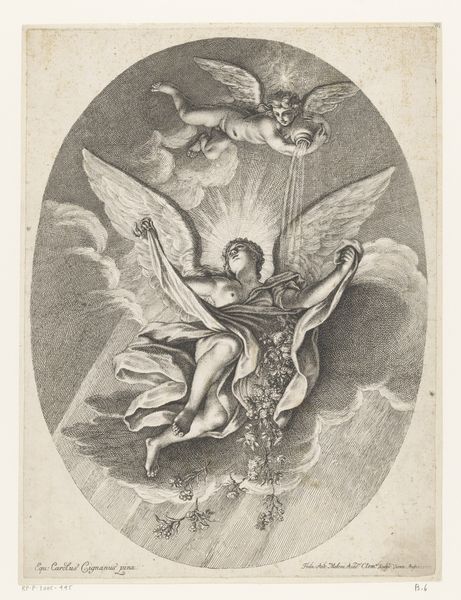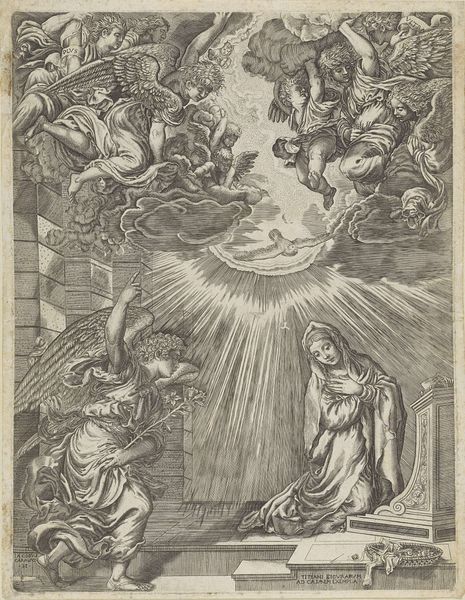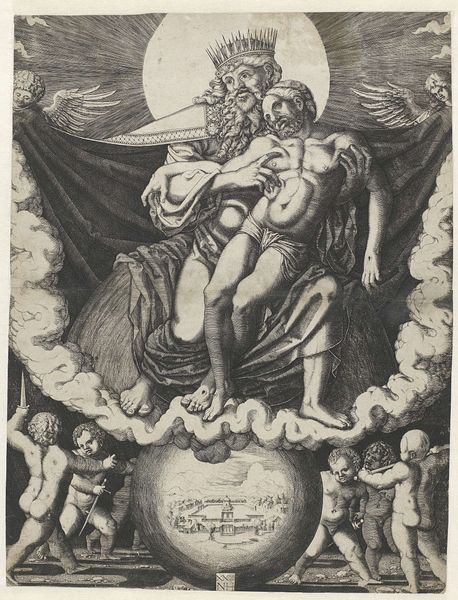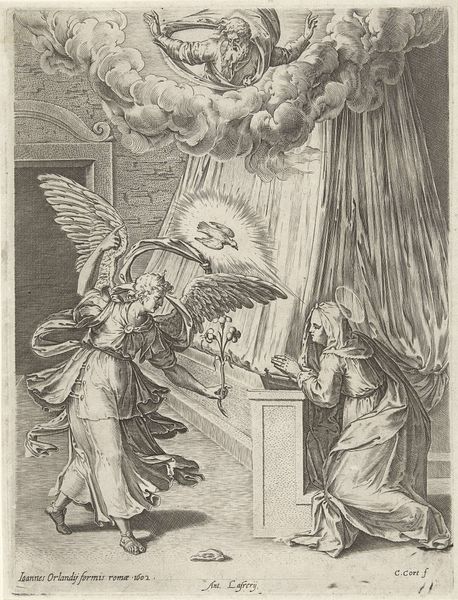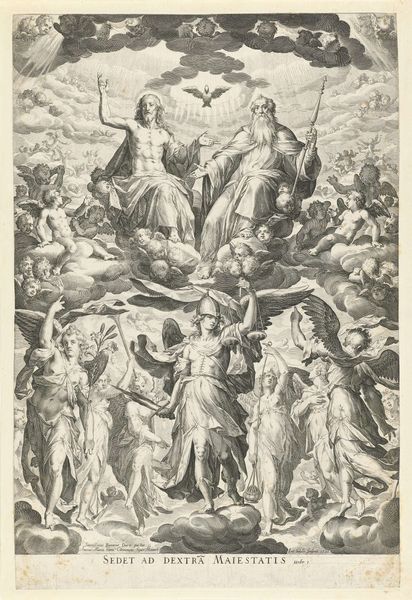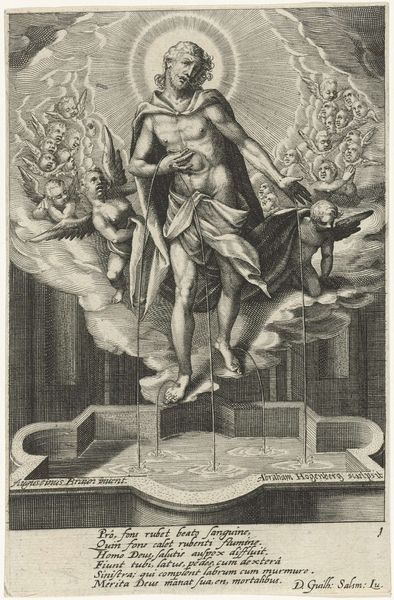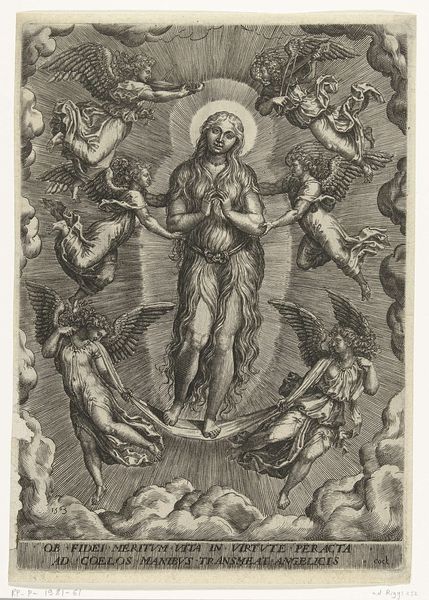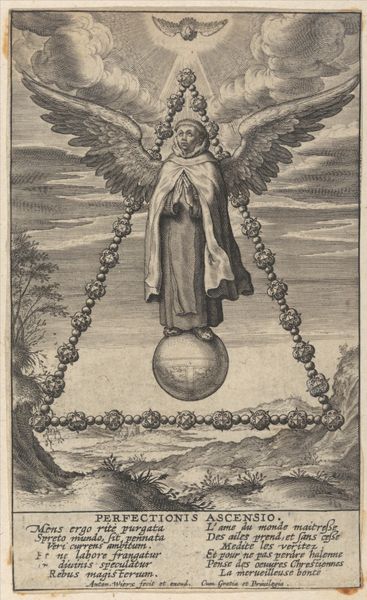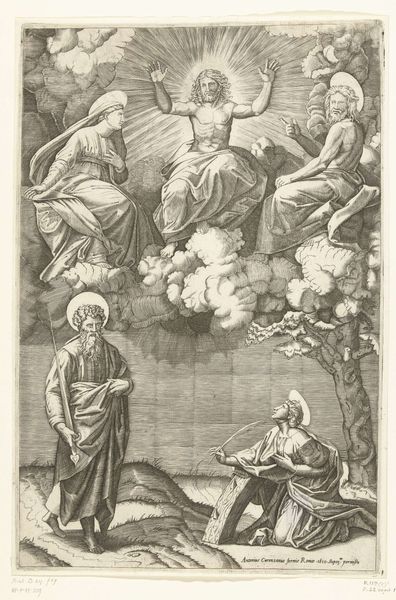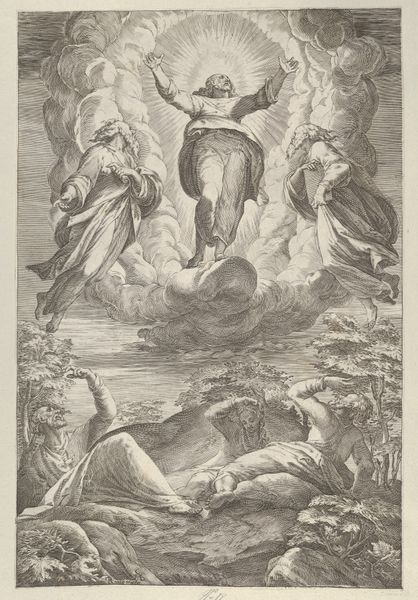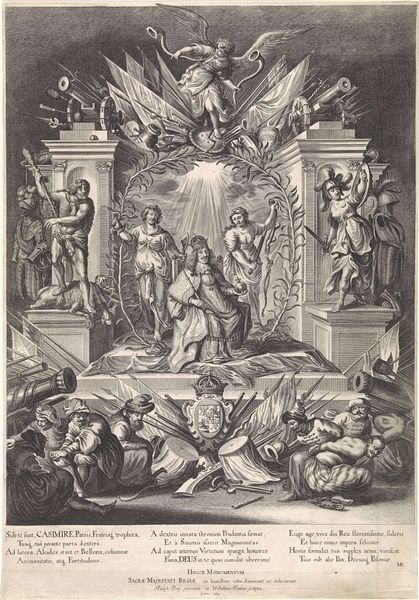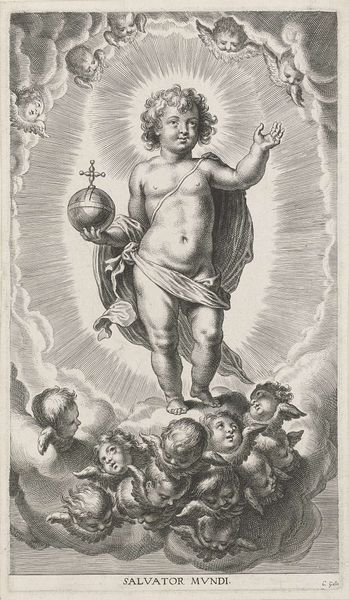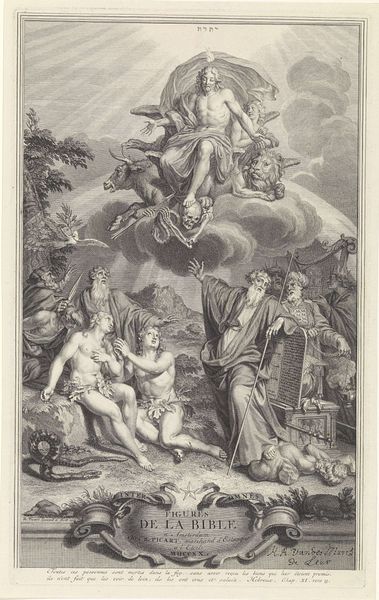
print, engraving
#
allegory
#
baroque
# print
#
figuration
#
engraving
Dimensions: height 321 mm, width 205 mm
Copyright: Rijks Museum: Open Domain
Editor: Here we have “Drie serafijnen in verschillende gedaanten,” or “Three Seraphim in Different Forms,” an engraving by François van Bleyswijck from the late 17th to early 18th century. What strikes me immediately is the density of lines creating these almost overwhelmingly ornate figures. What do you see when you look at this work? Curator: I see an artifact of its time, an artifact whose value lies as much in its production as in its representation. The engraving process itself – the labor involved, the skill required to manipulate metal and acid – tells a story about the organization of artistic production in the Dutch Republic. Who was commissioning these prints and what role did they serve? Editor: That’s fascinating. So, it’s less about the angels themselves and more about how this image came into being? Curator: Precisely. The seraphim are interesting insofar as they are commodities produced and consumed within a specific economic and social system. Were these mass produced? For individual devotion? To decorate a home? Considering those avenues opens us up to discuss class and belief in this period. Editor: So the materiality of the print – the paper, the ink, the lines themselves – are clues to understanding its broader cultural role. Curator: Exactly! It shifts our focus from divine subject matter to the very human conditions of its making and circulation. These materials point towards a vibrant market for religious imagery. How do these manufactured objects shape, and perhaps even commodify, spirituality? Editor: I hadn't considered the economics of religious art before. It adds a whole new layer of interpretation. Thank you! Curator: And thank you, these objects really provide unique insights.
Comments
No comments
Be the first to comment and join the conversation on the ultimate creative platform.
